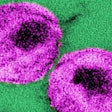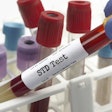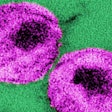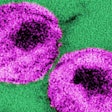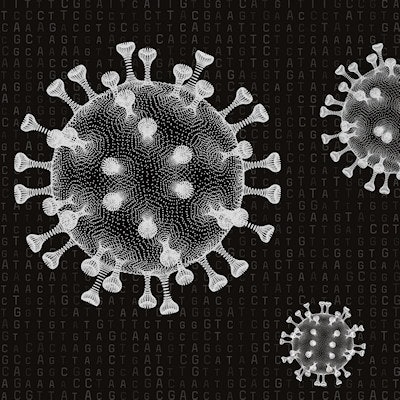
The major genetic risk factor for severe COVID-19 turns out to be something of a double-edged sword. New research demonstrates that individuals who carry the genetic variant also exhibit a 27% decreased chance of HIV infection compared to those who don't. The findings were published on February 21 in the Proceedings of the National Academy of Sciences.
The variant in question, which is associated with severe COVID-19, is located on chromosome 3 in a region that encodes for chemokine receptors. Individuals who carry the factor have decreased levels of the chemokine receptors CCR3, CCR5, and CXCR6, which was the clue to the link with HIV infection, since low values of these three receptors are associated with a lower prevalence of HIV infection, according to the paper's author, Hugo Zeber, PhD, of the Max Planck Institute for Evolutionary Anthropology.
The current study specifically focused on CCR5, a chemokine coreceptor for HIV that is involved in the process by which HIV enters into cells. Sequence diversity in the envelope spike of HIV-1 is known to influence the use of coreceptors like CCR5. The fact that the association between the host genome and the viral genome involves the coreceptor and the envelope spike suggests that the protective effect of the genetic variant is mediated by reduced viral entry, Zeber noted.
To calculate the risk ratio for HIV infection, Zeber conducted a meta-analysis of three biobanks: the UK Biobank, the Michigan Genomics Initiative, and FinnGen. In all, the study analyzed the genomes of 591 people of European descent with HIV and 667,215 control participants.
In all three cohorts, carriers of the risk allele for COVID-19 had an overall risk ratio for HIV infection of 0.73, which means that their risk of HIV infection was 27% lower than noncarriers.
"Whereas this genetic variant has had tragic consequences during the last 2 y [years] in the COVID-19 pandemic, it appears to have offered considerable protection against HIV during the last 40 [years]," Zeber wrote.
From Neanderthals to now
In the paper, Zeber outlines how the genetic variant was inherited from Neanderthals 50,000 to 70,000 years ago and rose in frequency between 20,000 to 10,000 years ago. Today, the variant is quite common, observed in 16% of the population in Europe and 50% of the population in South Asia. However, since HIV emerged relatively recently, it is not likely to have been the evolutionary driver of the variant.
"The major genetic risk factor for COVID-19 rose in frequency between 20,000 to 10,000 [years] ago; since this significantly predates the HIV pandemic, it is unlikely that this increase in frequency resulted from positive selection driven by HIV," Zeber wrote.
Other non-HIV microbes might have driven the evolution of the factor, including those responsible for smallpox, cholera, and bubonic plague.
"Variola virus emerged more than 10,000 y ago, making smallpox a likely candidate, whereas as Yersina pestis emerged later, ~7,000 [years] ago," Zeber wrote. "I also note that the highest allele frequencies today coincide with regions where cholera is endemic."
Though the genetic variant has conferred considerable protection from HIV infection, "its role in past and future pandemics remains to be seen," Zeber wrote.









